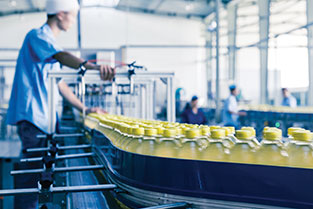
Understanding Waste Classification
All manufacturing waste is not the same. While this may be an obvious point, the fact is that there is no widely recognized standard for classifying such waste. Now, a proposed ASTM standard is being developed to help manufacturers address waste classification issues.
WK38312, Classification for Waste From Manufacturing Facilities and Associated Support Facilities, covers all waste created in manufacturing facilities, including office and production waste. Both hazardous and nonhazardous wastes will be covered by the standard. WK38312 will provide definitions and methods that will help to eliminate confusion that currently exists regarding manufacturing waste.
"At first, this sounds like a very simple issue and you may ask, why is a standard required," says ASTM member Amy Costello, sustainability manager, Armstrong World Industries. "But it is more complicated than that."
Costello cites the following questions that arise when classifying manufacturing waste:
- Is waste that is generated at a facility, and then sold, actually waste, or is it a byproduct?
- If this same material is given to another to use, is it still waste or a byproduct?
- What if the material is waste from one process, but is used somewhere else on the manufacturing site, such as wood dust that is burned in a boiler for energy?
- Is waste material generated during capital projects considered manufacturing waste?"
WK38312 is being developed by Subcommittee E60.13 on Sustainable Manufacturing, part of ASTM International Committee E60 on Sustainability. All interested parties are invited to participate in the standards developing activities of E60.
CONTACT Technical Information: Amy Costello, Armstrong World Industries • Lancaster, Pa. • tel +1. 717.396.3377 | ASTM Staff: Stephen Mawn • tel +1.610.832.9726 | Upcoming Meeting: April 28-30, 2015 • April Committee Week • Anaheim, Calif.
 SN Home
SN Home Archive
Archive Advertisers
Advertisers Masthead
Masthead RateCard
RateCard Subscribe
Subscribe Email Editor
Email Editor